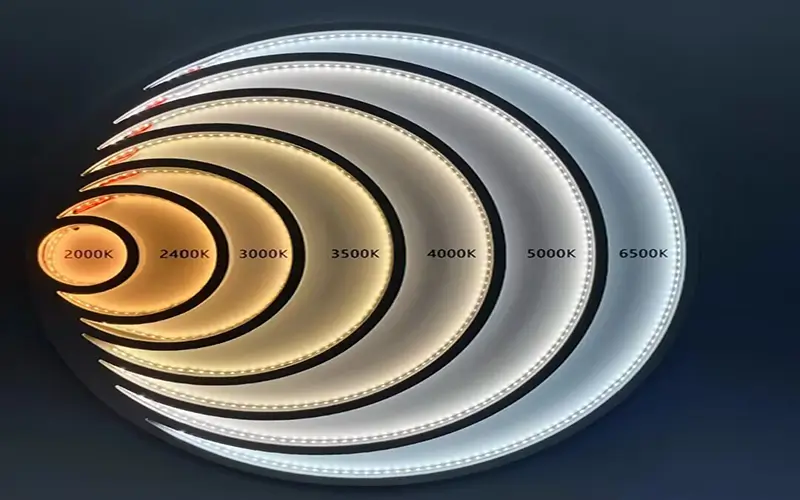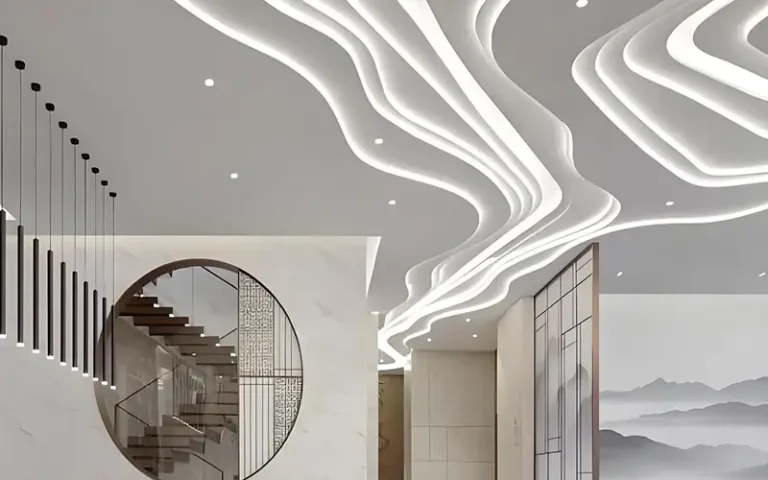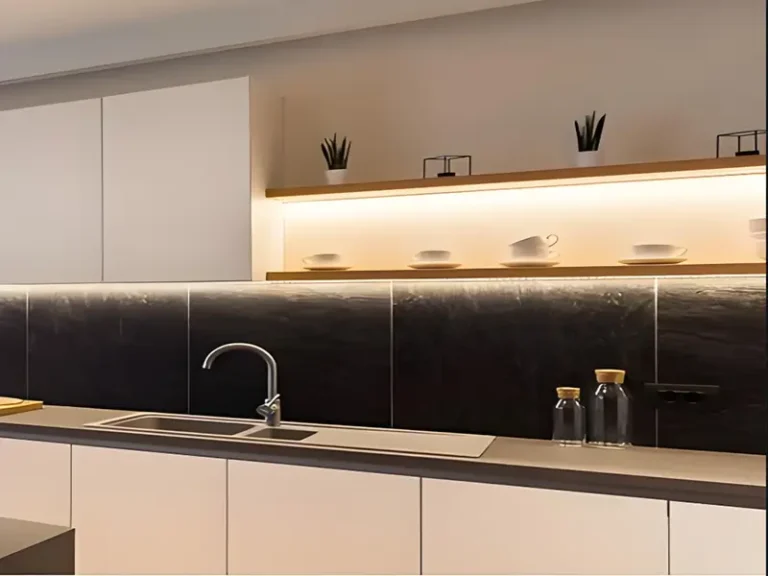What is Color Temperature of LED Light Strips?
LED light strips are becoming increasingly popular due to their versatility, energy efficiency, and bright lighting. In the process of looking for suitable LED light strips, you will encounter the questions of LED light strip color temperature. A key factor in the atmosphere and effect of LED light strips is their color temperature. Let’s take a closer look at what color temperature means for LED light strips and how it affects various applications.
What is an LED Light Strips?
LED light strips, also known as LED tape or LED ribbons, consist of flexible circuit boards embedded with light-emitting diodes (LEDs). It is flexible, high-efficient, and customizable. They provide a convenient and versatile solution for accent lighting, task lighting and decorative purposes in residential and commercial environments.
What Does Color Temperature Mean?
Color temperature refers to the hue of light emitted by an LED light source and is measured in Kelvin (K). It is measured in degrees Kelvin, with lower color temperatures being a warm, yellowish-red color, and higher color temperatures taking on a bluish tone.
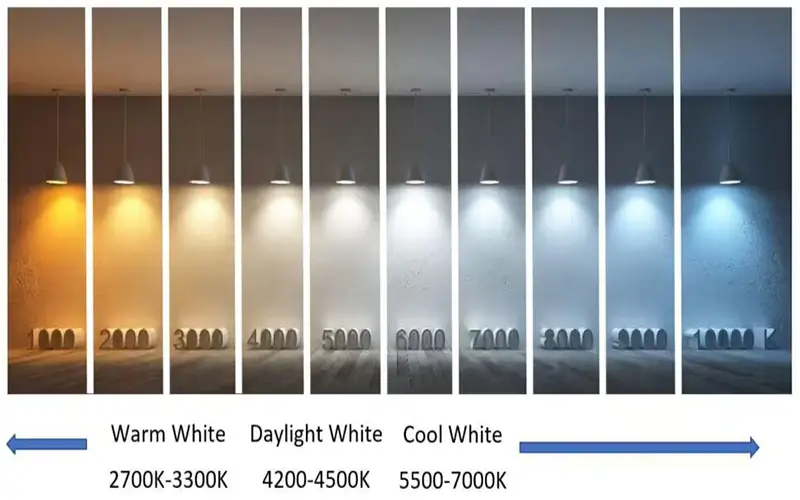
For example, a lower color temperature (such as 2700K to 3000K) emits a warm, comfortable light similar to traditional incandescent light bulbs. It makes people feel particularly warm and comfortable. While higher color temperatures, such as 5000K to 6500K, emit cooler, clearer light similar to daylight. Keeps people awake and calm.
What is the Importance of Color Temperature of LED Light Strips?
The correct choice of color temperature of LED strips is very important. It affects the mood, atmosphere and functionality of the space in use. Different color temperatures have different effects, and everyone has different feelings about each color temperature.
The warm white light creates a comfortable and welcoming atmosphere, ideal for residential living spaces and hotel environments. Cool white light, on the other hand, provides bright, vibrant lighting suitable for task-oriented areas such as kitchens, offices and retail spaces.
What is the Color Temperature of LED Light Strips?
LED light strips have various color temperatures and are available in a variety of color temperatures to meet different preferences and applications. Common LED lights strips color temperature options include warm white (approximately 2700K to 3000K), neutral white (approximately 3500K to 4000K), and cool white (approximately 5000K to 6500K).
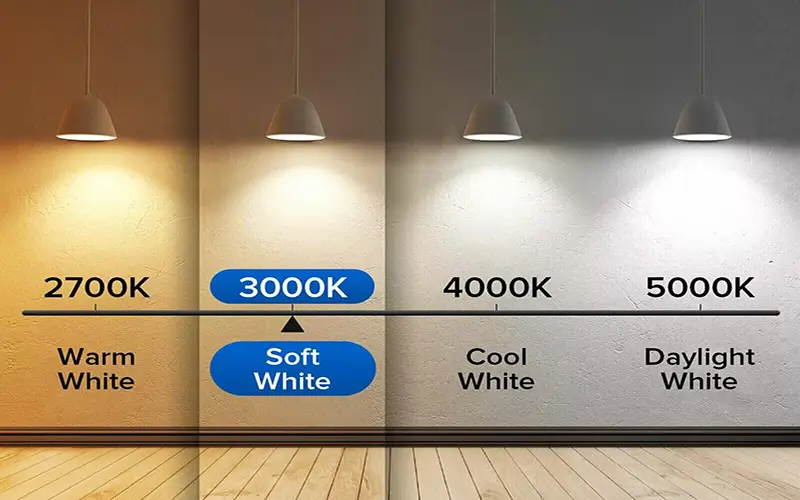
The following are the most commonly used color temperatures:
2700K: Warm, yellowish tone, ideal for bedrooms and other interior applications where ambience is needed.
3000K: 3000K is a little livelier than 2700K and is suitable for most high-end spaces.
4000K: Most retail fixtures and stores are a good place to install 4000K. Is the midway point between warm white and cool white.
6500K: Applications that need to simulate natural daylight should use 6500K.
How to Choose the Color Temperature of LED Light Strips?
Choosing the color temperature of your LED light strips is crucial to achieving the desired ambience and functionality in your space. You can make the right choice by referring to the following reasons:
Understand the meaning of color temperature
Be familiar with the concept of color temperature, which is measured in Kelvin (K). Lower Kelvin values represent warmer, yellowish light, while higher Kelvin values represent cooler, bluer light.
Consider the purpose of color temperature
Determine the main function of the LED light strip installation space, because different color temperatures are suitable for different environments and activities. Choosing a color temperature that matches the desired atmosphere and mood of the space mainly depends on each individual’s preference.
Matching with indoor lighting
When choosing the color temperature of LED light strips, consider the existing decoration style and color scheme of the room. Choose a temperature that complements the overall aesthetic and enhances the visual appeal of the space.
Focus on the CRI
Check the color rendering index (CRI) of your LED strips. The higher the CRI value, the light source can accurately render colors, making objects appear more vivid and natural. Aim for LED strips with a CRI of 80 or above for optimal color rendering.
Ensure consistency
Maintain color temperature consistency throughout the space to create a cohesive, harmonious lighting scheme. Avoid mixing different temperatures in the same area as this can cause visual inconsistency and detract from the overall ambience.
By considering these factors and paying attention to detail, you can choose the LED strip color temperature that best suits your needs, enhancing the aesthetics of your space and creating a welcoming and functional environment.
What are the Different Color Temperature LED Light Strips Used For?
LED light strips have many color temperatures to choose from, and different color temperatures are suitable for different occasions. The following are common color temperatures and place.
- Warm White (2700K to 3000K): Ideal for creating a cozy and welcoming atmosphere in living rooms, bedrooms and hotel settings.
- Neutral White (3500K to 4000K): Ideal for offices, retail spaces and task-oriented areas where balanced lighting is required.
- Cool White Light (5000K to 6500K): Provides bright, crisp lighting for kitchens, bathrooms, workstations, and areas where clarity and visibility are critical.
How to Avoid Color Temperature Difference of LED Light Strips?
The color temperature must be consistent, otherwise it will affect the lighting quality and atmosphere. To ensure uniform color temperature of LED strips, please purchase all strips from the same manufacturer and batch. Avoid mixing different color temperatures in the same space.
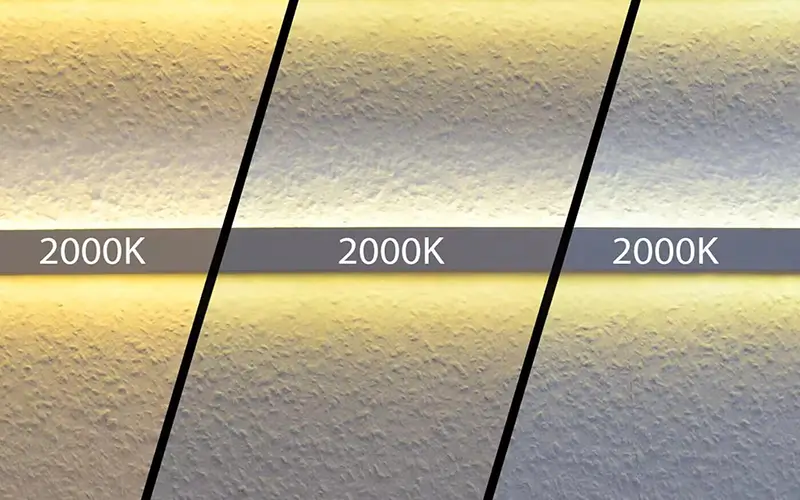
Purchase in the same batch
Whenever possible, purchase all LED strips from the same manufacturer and batch. This helps ensure color temperature consistency, as variations may occur between batches or production runs.
Check specifications
Before purchasing an LED light strip, please carefully check whether the color temperature tolerance provided by the manufacturer is within the controllable range. View detailed information about color temperature, CRI (color rendering index) and other relevant factors.
Test color temperature
After receiving the goods, test the LED light strip to verify its color consistency. Illuminate the sample portion of each strip and compare the color temperature and brightness levels to ensure uniformity across all strips.
Choose an adjustable LED light strip
Prioritizes adjustable LED light strips so you can adjust color temperature and brightness settings as needed.
Avoid mixing different color temperatures
To maintain consistency, avoid mixing LED strips with different color temperatures in the same area or installation.
Regular maintenance and inspection
LED strips need to be inspected and cleaned regularly. Over time, dust, dirt and debris can accumulate, affecting light output and color consistency.
Summary
The color temperature of LED light strips plays a vital role in shaping the atmosphere, functionality and aesthetics of a space. Make the right choice by understanding the definition and differences of color temperature. You can create customized lighting color temperature solutions that increase comfort, productivity and visual appeal. Whether it’s a warm, inviting glow that’s relaxing or a bright, energizing glow that boosts productivity. LED light strips with different color temperatures offer endless possibilities to meet different lighting needs and preferences.
FAQs
Color temperature refers to the perceived warmth or coolness of light emitted by an LED light source and is measured in Kelvin (K). Color temperature determines the hue of the light emitted by an LED lights strips, ranging from warm yellow to cool blue tones.
The best color temperature depends on the intended application and personal preference. The color temperatures many people choose are warm white (2700K to 3000K) which is comfortable and inviting, and cool white (5000K to 6500K) which is bright and vibrant.
Because color temperature affects the mood and atmosphere of a space. For example, warm white light 2700K/3000K creates a relaxing atmosphere, while cool white light 5000K/6000K improves work efficiency and concentration.
The color temperature and color rendering index of LED light strips are complementary to each other, and the color rendering index is a very important factor. (CRI) measures the accuracy of color rendering under a light source. A higher CRI value ensures that colors appear more natural and realistic, regardless of color temperature.
The color temperature of outdoor LED strips should complement the natural surroundings and architectural elements. The main concern is security, ensuring adequate visibility and security.

